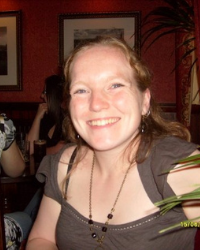Tammy Piper
Tissue Bank Manager, MRC Institute for Genetics and Molecular Medicine, speaks to us

How do biobanks help you?
The aim of our research is to optimize a patient’s breast cancer treatment, so the patient gets the treatment most likely to affect the tumour and improve their prognosis. To do this we collect breast tumour samples from thousands of patients in different clinical trials from around the world, all receiving different cancer treatments. This means we have a vast library of tumour tissues that can be used by our collaborators to investigate the affect current cancer therapies have on the tumour cells at a genetic level, ideally leading to new diagnostic tests which can provide patients with more information about their tumours biology and have more treatment options.
What is the most interesting or most useful thing you know which a biobank has been used for?
As we have so many breast tumours, we have managed to compile a wee training atlas of unusual breast tumours presentations, some of which the breast pathologist rarely seen himself throughout the course of his career. We use this atlas for training technicians and at public engagement events. For example we have glass slides from a bone cancer that had spread to the breast, and as the patient had presented with a breast lump, it was presumed it was a rebast tumour rather than a bone metastases.
Have you had to grapple with any ethical or social issues around biobanks and if so how did you deal with these?
One issue we have is the shift of research towards using datasets from historic clinical trials as these have longer patient follow-up periods so can provide more data for analysis as there would be more events (i.e. tumour recurrence or death from cancer). However the ethical challenges for using the tissues are that in many historic trials (circa 1980’s -1990’s), tumour tissue was not routinely collected as there wasn’t the scientific methods for meaningful analysis as there are today. That means patients would not have explicitly consented to the use of their tissue and the tissue sample number would not have been noted. Although theses tissues would be classed as ‘existing holdings’ under the Human Tissue Act 2004 and so able to be used for ethically approved research, there were few computer records used during these trials so we have to dig out patients paper medical files – something for which the trial participants would not have explicitly consented to at the time. As a result, we have to really think out the scientific value of the research we would like to do using these historic tumour samples and compile a robust data collection plan to be granted ethical approval to access the patient medical records without their consent.

